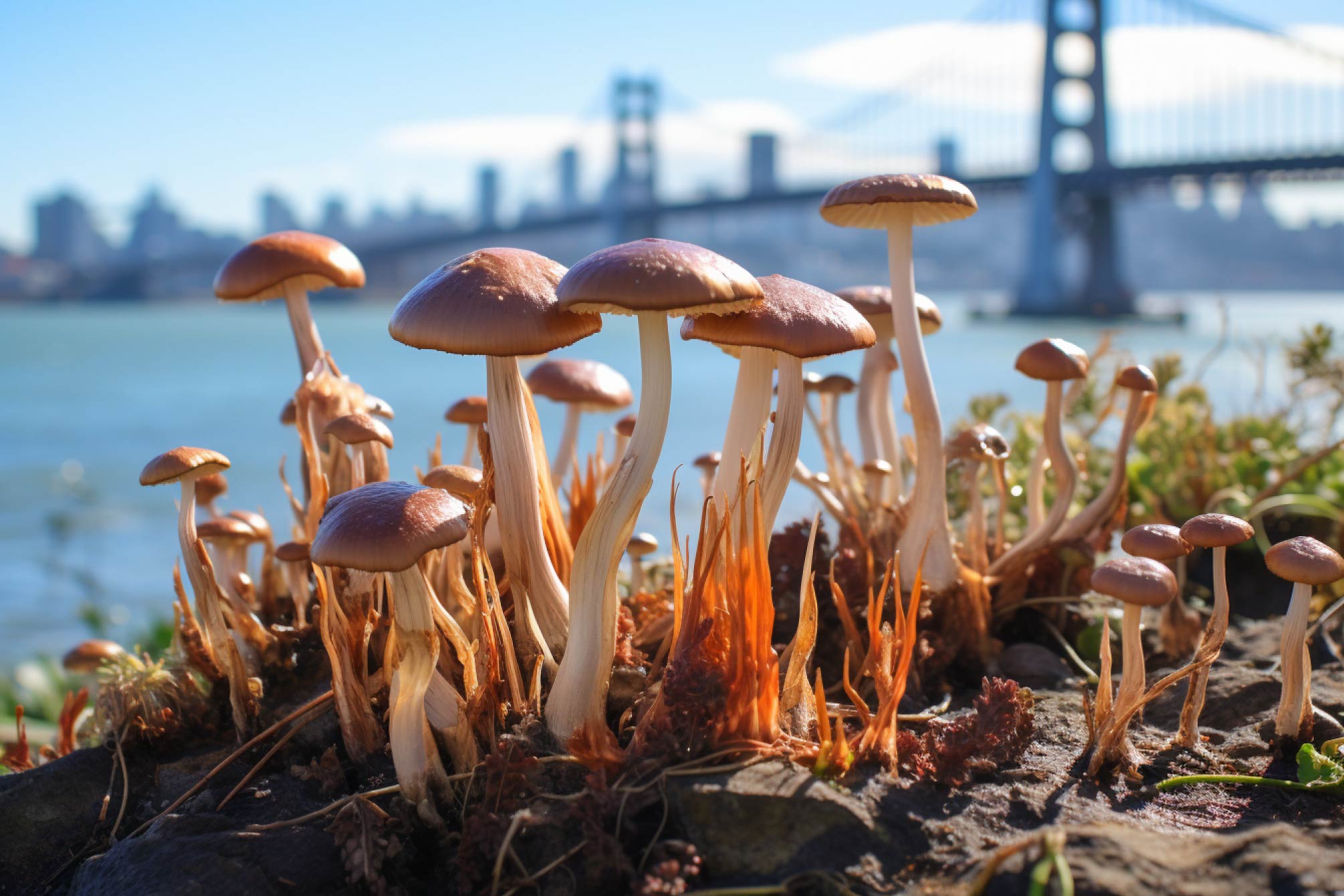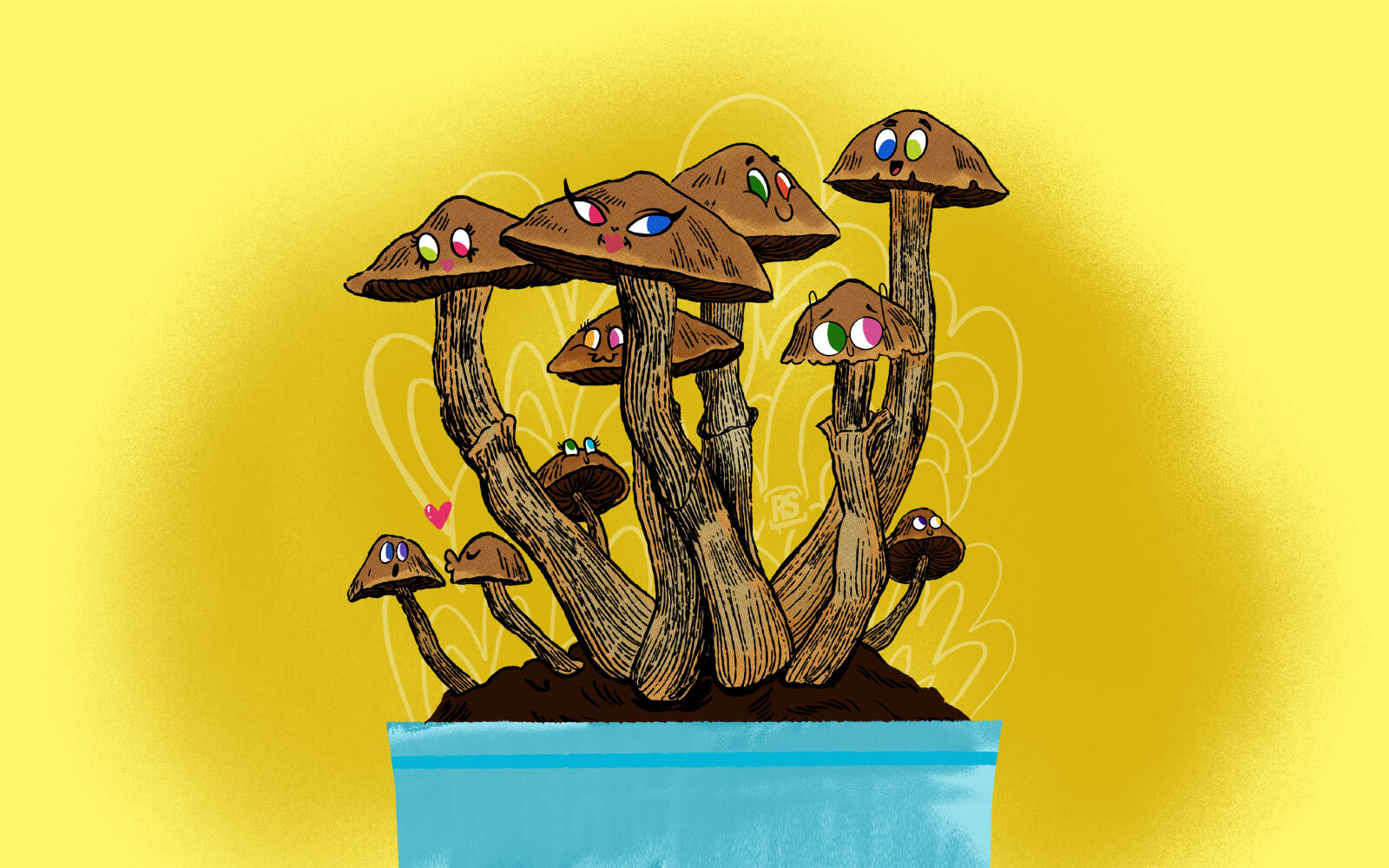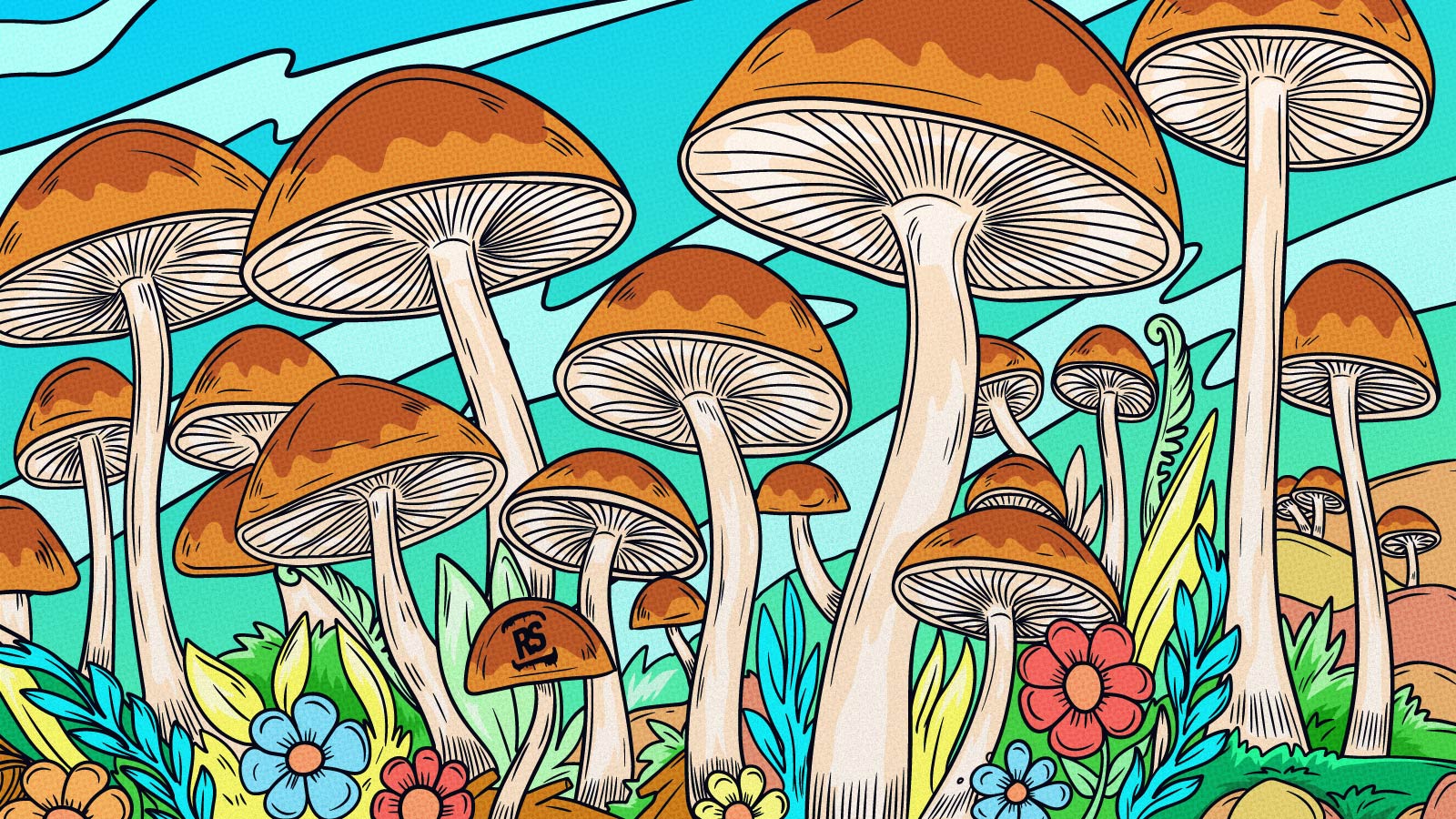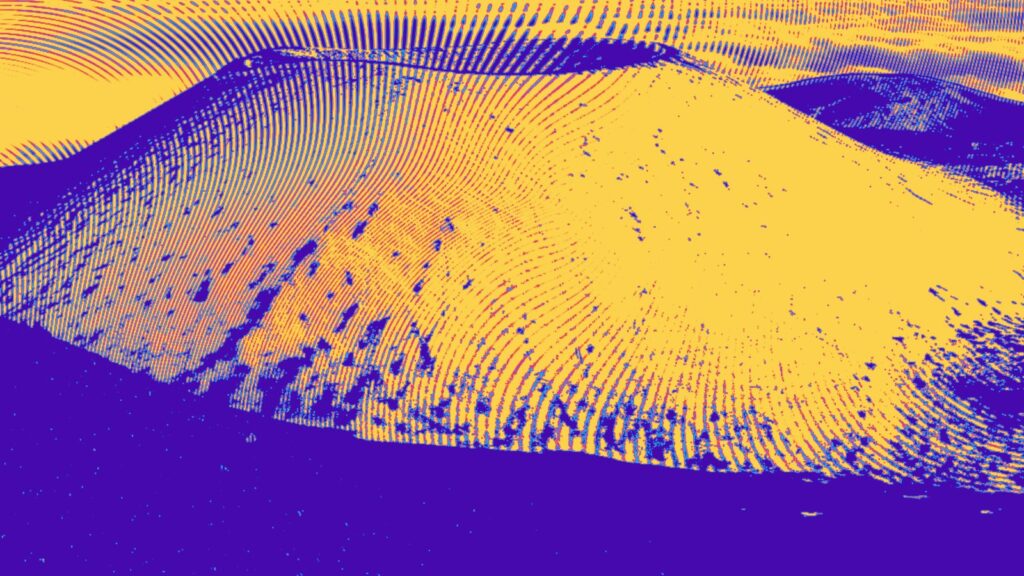The mystical world of fungi, especially psychedelic mushrooms, has captivated the minds of explorers, scientists, and psychonauts alike. To the Reality Sandwich community, mushrooms are not just a curious aspect of nature but a portal to uncharted realms of consciousness.
Paul Stamets, one of the foremost authorities on mycology, has shown us the incredible potential and science of fungi. And with this fire lit, we continue to explore various strains of magic mushrooms and their specific nuances. In this article, we dive into the captivating Psilocybe allenii, its identification, potency, and its viability for home growth. Buckle up as we embark on a mycological journey!
Psilocybe Allenii At a Glance
Named after John W. Allen, a passionate ethnobotanist and mushroom aficionado, Psilocybe allenii pays homage to an individual who spent decades documenting psychoactive fungi worldwide. His enthusiasm for mushrooms wasn’t limited to academic circles; he was equally keen on sharing his discoveries with the broader community, fostering a deeper understanding and appreciation of these natural wonders.
The Psilocybe genus, to which allenii belongs, is a diverse and intriguing group. It houses numerous species, many of which have been employed by indigenous cultures for their powerful psychoactive properties. Among the most recognized of these is Psilocybe cyanescens. Often referred to as the “wavy cap” for its undulating appearance, cyanescens and allenii share a familial bond, being of the same genus. However, while their psychedelic compounds make them siblings in a sense, each species possesses unique features and growth habitats.
When comparing the two, Psilocybe allenii often has a more robust stem and a slightly lighter cap color than its cousin, cyanescens. Their habitats overlap in the Pacific Northwest, and they both favor wood-rich environments. Still, keen observers and seasoned mycologists can discern the nuances that make Psilocybe allenii stand apart.

Photo courtesy of Third Wave
Psilocybe Allenii Identification
When venturing into the world of psychedelic mushrooms, accurate identification is not just a matter of curiosity—it’s a necessity. The mushroom kingdom is vast, and while many of its members offer profound experiences, others can be harmful or even lethal. With Psilocybe allenii becoming increasingly popular among foragers and enthusiasts, understanding its distinct features and habitats is crucial. This section is dedicated to aiding you in your quest to correctly identify this unique species, ensuring both safety and authenticity.
Where Do Psilocybe Allenii Grow?
Nestled along the West Coast, Psilocybe allenii has a distinct preference for wood-rich environments. These mushrooms predominantly flourish on decaying coniferous wood, making the mossy, damp, coastal woodlands their ideal playground. Specifically, they’ve been found from Los Angeles to British Columbia. However, they tend to be found most often in and around the San Francisco Bay Area, and are largely located in urban location. Seasons play a role too; they typically fruit in the cooler months, especially after the first heavy rains of the season.
How to Identify Psilocybe Allenii
Spotting the Psilocybe allenii requires a mix of awareness and an understanding of its signature characteristics. Here’s a breakdown to guide your foraging.
Cap: Often starting convex in younger specimens and becoming broadly convex to slightly flat as they mature. The color varies from a caramel hue to a richer golden brown, especially when moist. As it dries, the cap might become paler or even straw-colored.
Gills: These are closely spaced, adnate to adnexed in their attachment to the stem. Their color matures from a light grayish hue to dark purplish-brown, often with slightly paler edges.
Stipe (Stem): This is a standout feature. The stem is generally sturdy, and whitish in color, but it bruises blue or bluish-green when handled—a hallmark sign of its psychoactive properties.
Spore Print: If you’re looking to take a spore print, expect a dark purplish-brown hue.
Odor: The allenii emits a slightly farinaceous scent reminiscent of freshly ground flour or cucumber.
Psilocybe Allenii Look-Alikes
The world of mushrooms is filled with doppelgangers. While some are harmless, others can pose risks. For P. allenii, there are a few look-alikes to be wary of.
- Galerina species: Some of these are deadly toxic, containing potent toxins that can lead to fatal liver damage. They might share a similar cap appearance, but lack the blue bruising and their spore print is rust-brown.
- Psilocybe cyanescens: As mentioned earlier, this close relative can be confused with P. allenii due to their overlapping habitats and some physical similarities. However, the wavy cap of the cyanescens and its slightly more robust growth are differentiating points.
The Pacific Northwest is home to various Psilocybe species. Familiarize yourself with each one’s unique characteristics to differentiate them.
Psilocybe Allenii Potency
The world of psychedelic mushrooms is as diverse in experience as it is in appearance. While some species offer a gentle nudge into altered states, others can catapult users into profound realms of consciousness. Psilocybe allenii, like its close relatives, is prized not just for its natural beauty but also for its psychoactive potency and psilocybin content. However, potency isn’t just about strength—it’s about understanding the nuanced effects of a particular species and how it interacts with the individual. Let’s delve deeper into the potency of Psilocybe allenii and guide you through the intricacies of dosing for different intentions.
What Is a Psilocybe Allenii Dose?
Dosing with psychedelic mushrooms isn’t a one-size-fits-all endeavor. Factors such as body weight, metabolism, tolerance, and even the specific intention for the journey can all play a role in determining the right dose. With P. allenii, it’s important to note that its potency is relatively moderate, sitting in the same ballpark as the more globally recognized Psilocybe cubensis.
Venturing into the world of microdosing means seeking the benefits of the mushroom without the hallmark psychedelic experience. For Psilocybe allenii, a microdose generally ranges from 0.1g to 0.5g. At this dose, users often report heightened creativity, improved mood, and increased focus without pronounced perceptual changes.
For those embarking on a more immersive psychedelic journey, the dose requirements change significantly. A typical dose for a standard trip can range from 1g to 3.5g. However, always remember that individual sensitivity can vary. A dose that might be overwhelming for one person might be just right for another. Always start on the lower end if you’re unfamiliar with the species or if you’re inexperienced with psychedelics in general.
Navigating the waters of psychedelic exploration requires respect, knowledge, and mindfulness. Psilocybe allenii, with its rich history and moderate potency, offers a unique window into the mind and the universe beyond. Whether you’re microdosing for everyday benefits or diving deeper into the psychedelic realm, always approach with intention and care.
Can You Grow Psilocybe Allenii at Home?

The intrigue surrounding psychedelic mushrooms often leads many not only to forage but to consider cultivating these mystical fungi themselves. Growing mushrooms at home is a practice that merges science with art, patience with excitement, and nature with nurture. Psilocybe allenii, with its Pacific Northwest origins and wood-loving tendencies, presents its own set of challenges and rewards for the home cultivator. But the question beckons: Can you truly recreate the damp, forested environments of the Pacific coast in your home? Let’s find out.
Understanding the Substrate
At the heart of growing any mushroom is the substrate–the material on which mushrooms grow. For Psilocybe allenii, the affinity is clear: decaying wood. Unlike some other psychedelic mushrooms that prefer grain or dung, P. allenii thrives on a wood-based substrate. This can be replicated at home using a mix of hardwood chips and other supplements, often found at gardening stores or specialized mycology suppliers.
Temperature and Humidity
To mimic the conditions of the Pacific Northwest, maintaining the right temperature and humidity is crucial. A consistent temperature of around 70-75°F (21-24°C) and a high humidity environment is ideal for Psilocybe allenii. Using a humidifier, maintaining a moist substrate, and regular misting can help achieve these conditions.
Spawning and Fruiting
Starting with a high-quality spore syringe or a live culture, you’ll need to inoculate your prepared substrate in sterilized containers or bags. As the mycelium colonizes the substrate, it will eventually be ready for fruiting conditions. This means introducing it to light and adjusting temperature and humidity to induce mushroom growth.
Challenges and Rewards
While cultivating Psilocybe allenii at home is certainly possible, it does present challenges, especially for those unfamiliar with mushroom cultivation. Ensuring a sterile environment to prevent contamination, maintaining optimal growing conditions, and patiently waiting for the fruiting stage requires dedication.
However, the rewards are manifold. Beyond the psychedelic yield, the process itself is meditative, offering insights into the intricate web of life, growth, and nature’s intelligence.

A Recommended Guide
If the idea of growing Psilocybe allenii or other psychedelic mushrooms has piqued your interest, Reality Sandwich’s Best Mushroom Grow Kits Guide offers a comprehensive look into the tools and techniques to start your mycological journey. With step-by-step instructions, tips, and trusted recommendations, it’s the perfect companion for both beginners and seasoned growers.















